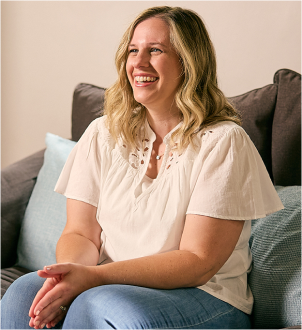1-833-ZEPOSIA
ZEPOSIA is a once-daily pill for adults with relapsing multiple sclerosis (MS).
Take as directed by your doctor if certain liver problems exist.
ZEPOSIA is a once-daily pill for adults with relapsing multiple sclerosis (MS).
Take as directed by your doctor if certain liver problems exist.
See how ZEPOSIA treats the visible and invisible signs of MS
ZEPOSIA is proven to help protect the brain from the damaging effects of MS by reducing relapses and new or enlarging lesions.*
ZEPOSIA was compared to a leading injectable medicine, Avonex,† in 2 clinical studies. Results included patients from multiple studies and continued until February 2022.
- In a 2-year study, people taking ZEPOSIA had 38% fewer relapses and 42% fewer new or enlarging lesions (T2) than those taking Avonex. There was no significant difference in disability progression between people taking ZEPOSIA and those taking Avonex.
- Avonex® (interferon beta-1a).
When a new MS symptom occurs, or an existing symptom gets worse, it’s defined as a “relapse”
(or “exacerbation” or “flare-up”). This symptom must last more than 24 hours and be separated from the previous relapse by at least 30 days. The severity and duration of a relapse is often unpredictable. No 2 relapses are alike, but most last from a few days to several months.
1-year study

FEWER RELAPSES
Annualized relapse rate‡: 0.181 with
ZEPOSIA vs 0.350 with Avonex
78%
HAD ZERO RELAPSES
vs 66% of people who took Avonex
2-year study

FEWER RELAPSES
Annualized relapse rate‡: 0.172 with
ZEPOSIA vs 0.276 with Avonex
76%
HAD ZERO RELAPSES
vs 64% of people who took Avonex

FEWER RELAPSES
Annualized relapse rate‡: 0.181 with ZEPOSIA vs 0.350 with Avonex
78%
HAD ZERO RELAPSES
vs 66% of people who took Avonex

FEWER RELAPSES
Annualized relapse rate‡: 0.172 with ZEPOSIA vs 0.276 with Avonex
76%
HAD ZERO RELAPSES
vs 64% of people who took Avonex

3 out of 4 patients taking
ZEPOSIA had ZERO RELAPSES
in both clinical studies
- Average number of relapses a group of people has over a year.
Combined from both studies at 2 years:
90% of people taking ZEPOSIA or Avonex
had no confirmed DISABILITY PROGRESSION
There was no significant difference in disability progression between people taking ZEPOSIA (7.6% of people) and Avonex (7.8% of people).
This progression was confirmed after 3 months with predefined increases in Expanded Disability Status Scale A method used to measure disability in MS and monitor changes in the level of disability over time. scores and results were combined from both clinical studies.
An MS lesion is an area of damage or scarring that can occur throughout the central nervous system, including the brain. Lesions often progress over time, and this progress is monitored by your doctor using magnetic resonance imaging (MRI) scans.
New or enlarging lesions (T2)§
1-year study

FEWER LESIONS
1.47 average per year vs 2.84 with Avonex
2-year study

FEWER LESIONS
1.84 average per year vs 3.18 with Avonex

FEWER LESIONS
1.47 average per year vs 2.84 with Avonex

FEWER LESIONS
1.84 average per year vs 3.18 with Avonex
Active lesions (T1 Gd-enhancing)¶
1-year study

FEWER LESIONS
0.16 average per year vs 0.43 with Avonex
2-year study

FEWER LESIONS
0.18 average per year vs 0.37 with Avonex

FEWER LESIONS
0.16 average per year vs 0.43 with Avonex

FEWER LESIONS
0.18 average per year vs 0.37 with Avonex
- T2 lesions refer to a type of magnetic resonance imaging (MRI) scan that can be used to identify the total number of lesions a person has.
- T1 Gadolinium (Gd)-enhancing lesions are areas of active inflammation that show current MS activity in the brain.
ZEPOSIA & the brain
Everyone loses brain volume as they age, but for people with MS it can happen more quickly.
After the studies were complete, brain volume loss was evaluated for people who took ZEPOSIA and Avonex in what is called a post-study analysis. A post-study analysis takes place after the study has ended. Therefore, no conclusions should be drawn from the data.

REDUCTION in
BRAIN VOLUME LOSS
vs Avonex#
ZEPOSIA loss was 0.71% vs 0.94% for a leading injectable
Based on the way these studies were designed, the difference between people who took ZEPOSIA and those who took Avonex was not considered statistically significant. Because there was no significant difference in these results, it can’t be determined by this study whether the following results were due to treatment with ZEPOSIA or if they happened by chance.
- 2-year study: 787 people were studied (ZEPOSIA 390, Avonex 397).
The brain is made up of both grey matter Grey matter is found on the surface of the brain and deep within it. These are areas where communication signals begin. and white matter
White matter is where signals pass from one part of the brain to another (and to the rest of the body)., and both decrease more quickly in people with MS.
Grey matter is found both on the surface of the brain and deep within it. These are areas where communication signals begin.
After the studies were complete, grey matter loss was evaluated for people who took ZEPOSIA and Avonex in what is called a post-study analysis. A post-study analysis takes place after the study has ended. Therefore, no conclusions should be drawn from the data.

REDUCTION in
SURFACE GREY MATTER LOSS
vs Avonex**
ZEPOSIA loss was 0.44% vs
1.11% for a leading injectable

REDUCTION in
DEEP GREY MATTER LOSS
vs Avonex††
ZEPOSIA loss was 1.40% vs
1.85% for a leading injectable
The differences were measured as the average percentage change in volume.
Based on the way these studies were designed, the difference between people who took ZEPOSIA and those who took Avonex was not considered statistically significant. Because there was no significant difference in these results, it can't be determined by this study whether the following results were due to treatment with ZEPOSIA or if they happened by chance.
- 2-year study: 772 people studied (ZEPOSIA 382, Avonex 390).
- 2-year study: 776 people studied (ZEPOSIA 385, Avonex 391).
Cognitive processing speed is a way to show how quickly the brain is able to receive information, process it correctly, and react to it.
After the studies were complete, cognitive processing speed was evaluated for people who took ZEPOSIA and Avonex in what is called a post-study analysis. A post-study analysis takes place after the study has ended. Therefore, no conclusions should be drawn from the data.
It was measured as part of a common evaluation for people with MS called the Multiple Sclerosis Function Composite. How was cognitive processing speed measured?
Changes in speed were measured in the 1-year study as part of the Multiple Sclerosis Functional Composite (MSFC), a common evaluation for people with MS, which is made up of 3 tests:
The Symbol Digit Modalities Test (SDMT), which evaluates a person’s ability to review, assess, and process information, and then perform a task based on that assessmentThe 2 other tests include the 9-hole peg test and the timed 25-foot walk
The Symbol Digit Modality Test (SDMT) results were evaluated on their own after the 1-year study was complete.
Changes in cognitive processing speed


1-year study: 792 people studied (ZEPOSIA 397, Avonex 395).
Because the evaluation of cognitive processing speed was not statistically significant, no conclusion should be drawn from the data.



My experience with ZEPOSIA has been great. My last MRI showed no new lesions, and I haven’t had any relapses.‡‡
—Heather
A real ZEPOSIA patient compensated for her time.
‡‡ZEPOSIA was compared to Avonex in 2 separate clinical studies.
(Individual results may vary.)
Learn about ZEPOSIA safety and side effects
See the side effects that were reported in clinical trials.
Explore safetyAbout the clinical studies
In 2 separate clinical studies, a 1-year and a 2-year study, ZEPOSIA was compared to a leading injectable medicine, Avonex.
Both studies were randomized, meaning participants were chosen randomly to receive either ZEPOSIA or a leading injectable medicine. The studies were also double-blind, so neither the professionals giving the medication nor the people taking it knew which medication was being administered.
Study size
When the 2 clinical studies were completed (and combined), they were 1 of the largest studies to compare 1 MS medication to another (not a placebo).
Together, the 2 studies included 1,769 people in total:

Who was studied
Prior to joining the studies, all participants experienced at least 1 relapse within the past 2 years and had evidence of T1 Gd-enhancing lesions. T1 Gd-enhancing lesions are areas of active inflammation that show current MS activity in the brain.
Average age:

Approximately:

2084-US-2400054 04/24











